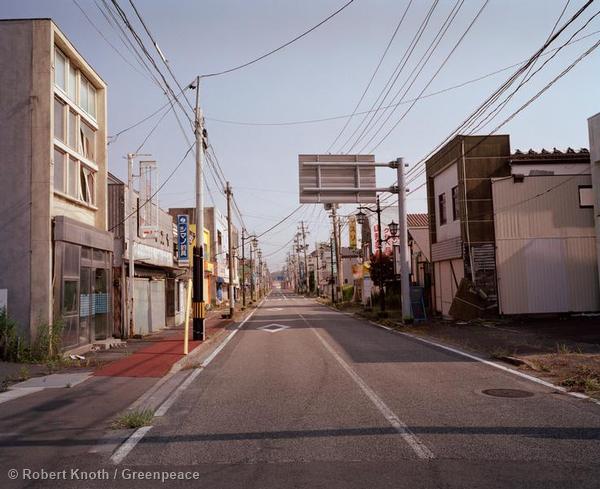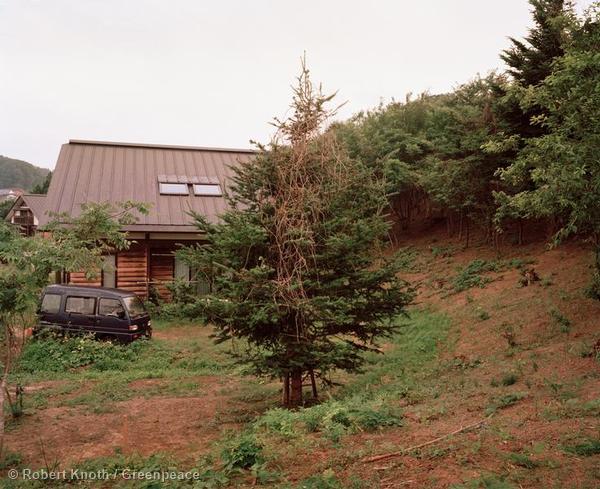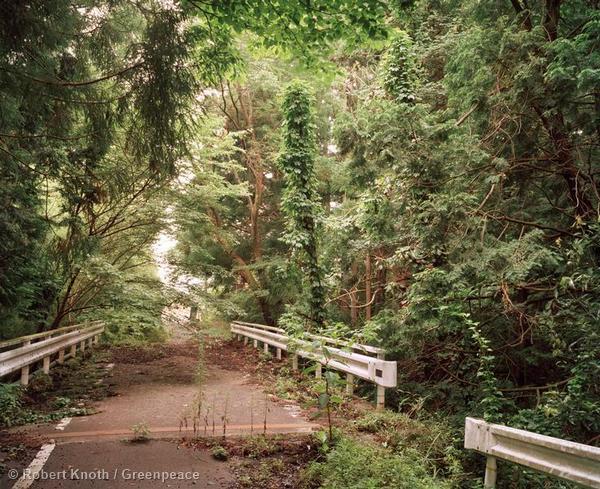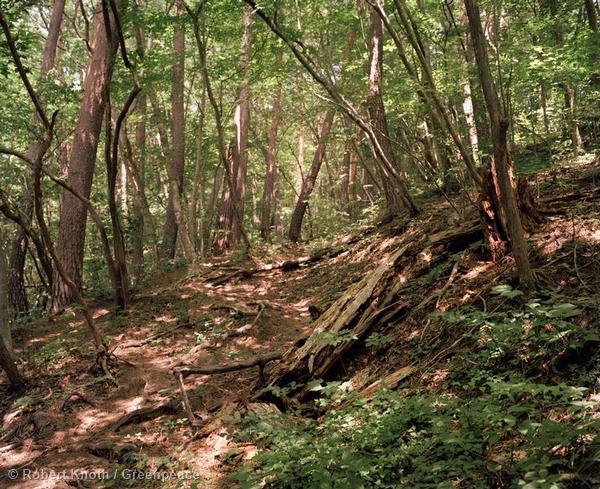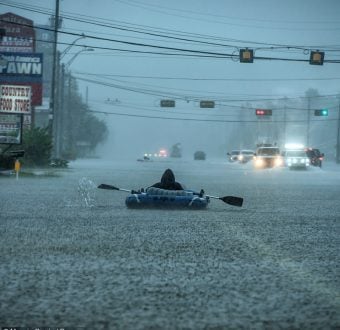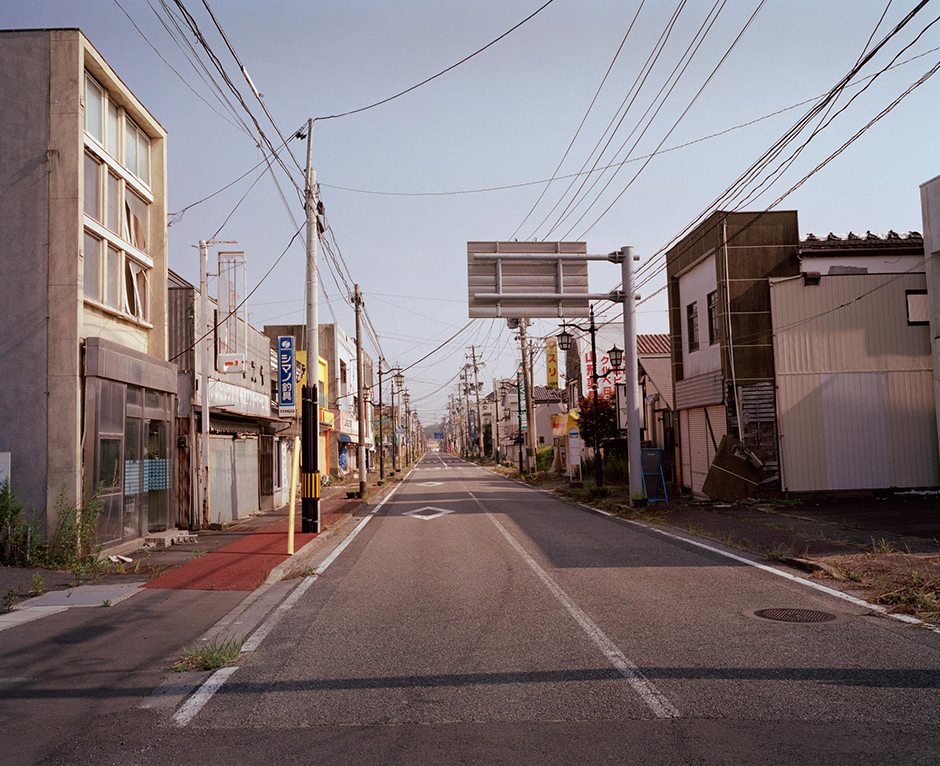 The Town ofNamie is completely abandoned and an officially closed off area. Only clean-up and nuclear workers from the plant are allowed into the zone with special permission
The Town ofNamie is completely abandoned and an officially closed off area. Only clean-up and nuclear workers from the plant are allowed into the zone with special permission
A recurring theme in movies is the Last Man on Earth genre. A cataclysmic event or a virulent disease has wiped out most of humanity and left the survivors hideously mutated into dangerous monsters except for one hero who roams an empty world looking for a way to restart civilization.
Theres a ideal film set forming for the next addition to this genre, but its unlikely to be used because it is simply too dangerous to spend any time there. This place is cities, towns, farms and forests that have been rendered uninhabitable by radiation from the Fukushima nuclear disaster.
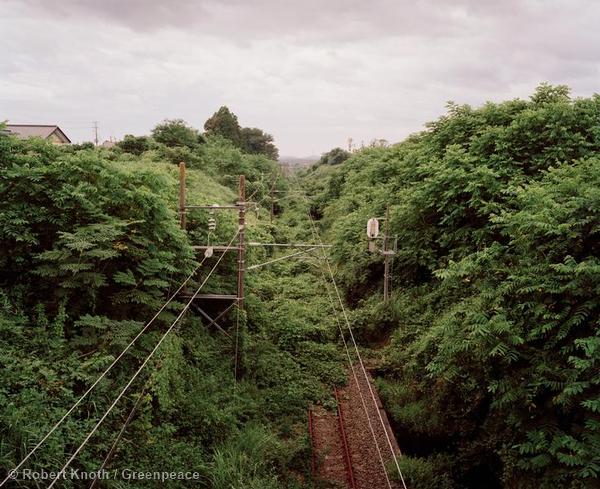 Vegetation coversYonomori Railway Station
Vegetation coversYonomori Railway Station
An abandoned garden in the village ofIitate
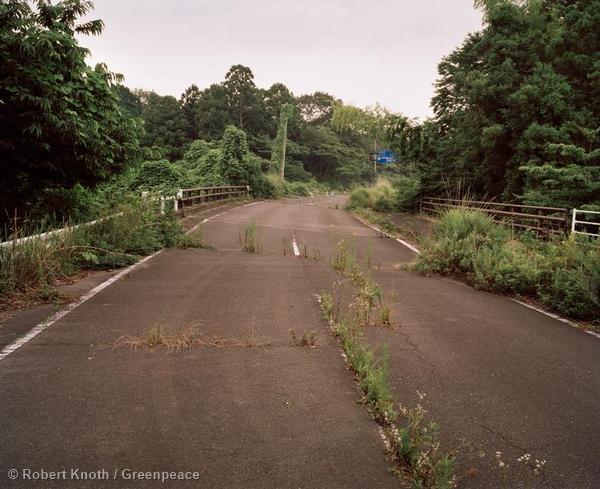 Grass grows through cracks in a road nearMotooka Shimizu
Grass grows through cracks in a road nearMotooka Shimizu
Trees take over a road inMotooka Shimizu
In March 2011, the worst nuclear catastrophe in a generation occurred at the Fukushima Daiichi nuclear power plant in Japan, with triple reactor core meltdowns and exploded containment domes. The catastrophe followed an earthquake which caused a tsunami which devastated the seaside site of the plant. Radiation spilled into the air and water spead out over miles of the surrounding land.
Photographer Robert Knoth, working with journalist Antoinette De Jong has documented the impacts of the accident beginning in November 2011, as part of the photo project, “Shadowlands.” Created on large format film,scanned into a digital format, and color graded, the images speak for themselves.
Project Description:
“The reportage depicts the gradual change in the landscape caused by the absence of people in the abandoned villages, capturing the astounding but eerie beauty of the area as the process of decay is slowly taking its toll.
The impact of the Fukushima meltdown in the surrounding villages is already obvious with abandoned homes and gardens already falling into decay. Around 150,000 people will not able to return to their homes for years to come and some will never be able to return at all.
In northern Japan the soil in many forests, agricultural fields and on mountain slopes is now contaminated by radioactive elements. As a result these have become vast reservoirs of radioactive particles, which are absorbed by the trees and plants. With the annual shedding of leaves, the radioactive pollution ends up in the soil once more and will get absorbed time after time -and for decades to come, until it finally breaks down. It is this cycle of continuous pollution that will be Fukushimas ultimate legacy, preventing the use of agricultural lands and forests, thus virtually ending a traditional way of life for many of its inhabitants. Decontaminating agricultural lands and gardens provides no definite solution as areas previously decontaminated are already being re-polluted by groundwater and through migration of soil from mountain slopes and forests areas so vast they can never be thoroughly cleaned.
In the 17th century, many Japanese forests and woodlands were depleted and on the verge of permanent destruction. They were saved by some of the very first known reforestation policies in the world as the authorities at the time recognized the need to restock the forests and ensure the very survival of rural communities. Over the centuries a widespread woodland conservation policy developed. What we now know as Japanese nature is in fact largely the result of a deliberate and vital policy of sustainable forestry. This culture of safeguarding the land and forest is deeply rooted in Japanese society and carefully preserved within the rural communities. The ancestral lands of rural Japan are key to its local communities, economically but also in terms of their religious and cultural identity. Some villages in the region are over 2000 years old and many people feel very strongly about their connection to the land”.
The Shadowlandsproject was funded by The Mondriaan Foundation, Stichting Democratie en Media, Stichting Anna Cornelius, Knoth and de Jong and Greenpeace International Picture Desk.
- Fallen trees on a forest path on holy mountain, leading towards the 11th Century Yamatsumi Shrine only 40 kms from the Fukushima Diiachi reactor.
